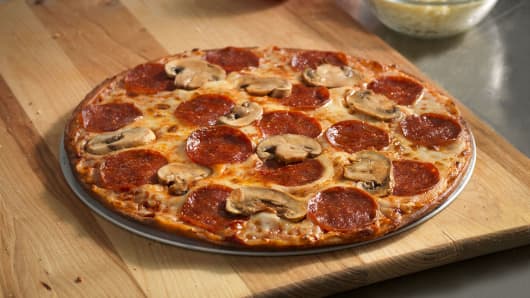In the past year, gluten-free or wheat-free orders grew to number over 200 million, more than double what they were four years ago.
According to a National Restaurant Association survey, professional chefs named gluten the eighth most popular trend of 2013. Quick-service restaurant operators paid even more attention to it and called it the top menu trend this year.
This interest is part of an overall jump in consumers' desire for healthier restaurant foods, said Joy Dubost, the association's nutrition director.
"Consumer interest in health and nutrition is a long-term trend on restaurant menus that takes a variety of forms, be it the latest fad diet or lifestyle dietary changes," Dubost said. "Restaurants generally offer a wide variety of menu options to meet this interest, and also encourage customization of other items to fit specific diets, for example, salad dressing on the side or choice of side dishes."
Several companies have launched new items or entire menus for the diet including Domino's Pizza, Bloomin' Brands' Outback Steakhouse and Darden Restaurants' Olive Garden. To create these offerings, restaurants often modify existing recipes by substituting ingredients rather than completely starting from square one, she added.
In addition to wanting to reach a new customer, Mary Chapman, Technomic's director of product innovation, said restaurants may create these menus to appear innovative or to avoid alienating an entire dining group.
"Restaurants think a lot about how to avoid the 'veto vote' or that one person who can't or won't go to a certain place because they don't have what they can or want to eat," she added.
Ironically, restaurants sometimes caution those with celiac disease against consuming these products. Domino's sparked controversy within the community when it warned consumers that its gluten-free pizza crust was prepared in a common kitchen with the risk of gluten exposure.
"Therefore, Domino's DOES NOT recommend this pizza for customers with celiac disease," the company said on its website. "Customers with gluten sensitivities should exercise judgment in consuming this pizza."
Chapman said this is a common issue for gluten-free menus because it's so difficult to avoid cross-contamination in a kitchen.
Still, the recent sharp uptick in gluten interest begs the question: Will gluten avoidance follow the restaurant law of gravity that other eating fads have succumbed to — that what goes up in popularity must come down?
For now, companies are betting the trend has some staying power. In July, Smart Balance, which has since changed its name to Boulder Brands, bought Udi's Health Foods, which makes a variety of gluten-free products from bread to cookies, for about $126 million in cash and said it expected the purchase to accelerate its growth rate.
But In some ways, Chapman said gluten awareness is just another diet trend, like the low-carb craze, which was inspired by the Atkins and South Beach diet craze of the early 2000s.
"We saw restaurants offering sandwiches made with lettuce rather than bread and burritos served in bowls instead of tortillas," she said. "Some of those dishes still exist because there's still a market for them, but they're not all over the menu."
She added that every product has a lifecycle regardless of whether it's part of a diet trend.
"I hate to call it a fad, because there are people who are benefiting from the increased awareness and attention," she said. "Those people will always need to think about whether something has gluten in it. But the market will certainly shrink as attention moves to the next thing."



